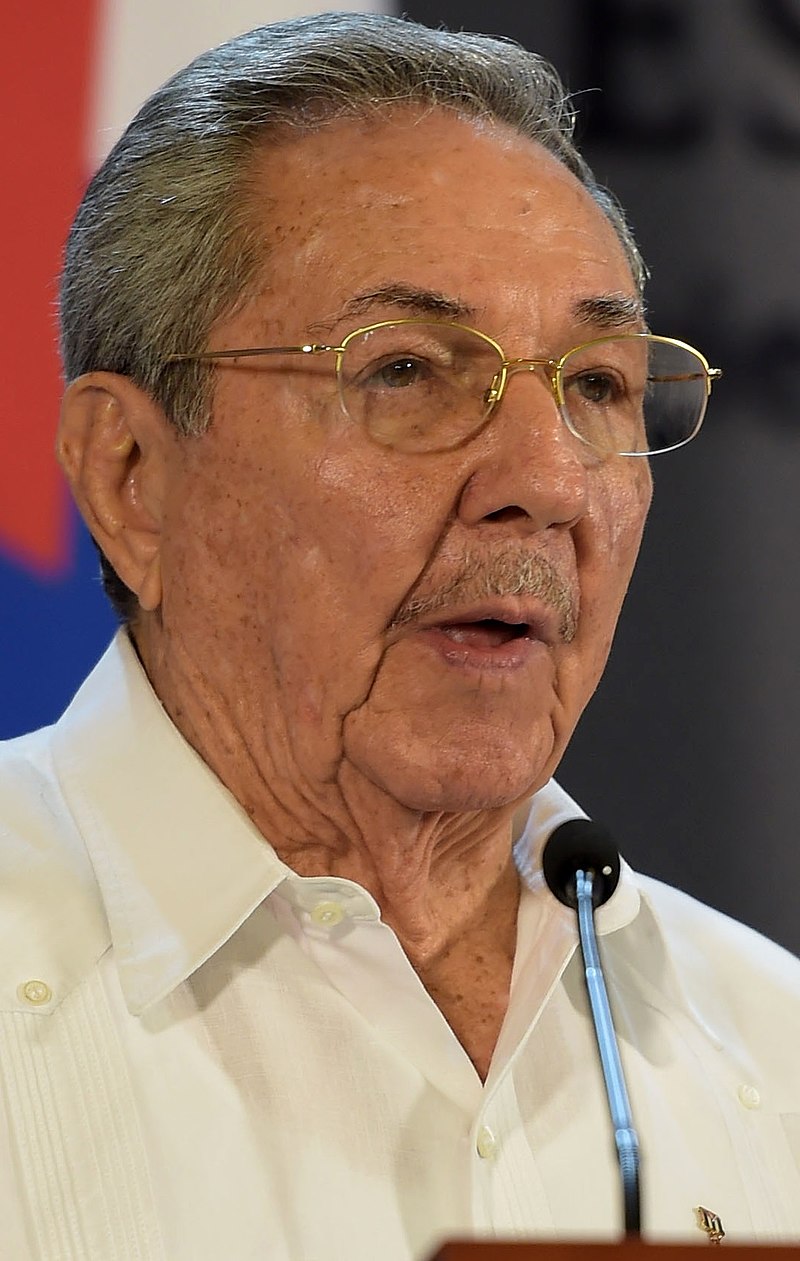
HAVANA — President Raul Castro and his expected successor attended the formal unveiling of a U.S.-sponsored statue of independence hero Jose Marti on Sunday in a sign of Cuba’s focus on maintaining ties with the United States despite a chill in relations under President Donald Trump.
Castro and Vice-President Miguel Diaz-Canel sat in the front row of the sunrise ceremony along with Democratic members of Congress Barbara Lee and Karen Bass of California and Kansas Republic Roger Marshall, who were the highest-ranking Americans at the ceremony. Castro makes relatively few public appearances, endowing the ceremony with a stamp of particular importance in a country where the movements of high officials are closely scrutinized for clues to government plans and intentions.
The bronze statue of Marti on a rearing horse was funded with $2.5 million raised in the United States in a project started by the Bronx Museum of the Arts, which has longstanding ties with Cuban state cultural institutions. The 18.5-foot (5.6-meter) long, 8-ton work is an exact copy of a sculpture installed on the south end of New York’s Central Park in 1965.
Sunday was the 165th anniversary of the birth of Marti, a renowned poet, journalist and fighter for Cuban independence who was fatally wounded in an 1895 battle for independence from the Spanish.
Marti, who spent years in exile in New York City, is almost universally revered by Cubans on the island and overseas despite their political differences, making him a potent symbol of attempts at reconciliation between the U.S. and Cuba.
“I’m extraordinarily overjoyed that we in Havana can on this day enjoy such a beautiful work of poetic inspiration, “Havana City Historian Eusebio Leal said in an address to the crowd that was also broadcast on state-run media.
Bronx Museum Chairman of the Board Joseph Mizzi also addressed the audience and New York Mayor Bill de Blasio sent a letter read aloud by an assistant.
The statue has been placed in a prominent site in Havana, near the Museum of the Revolution and facing out toward the Florida Straits and the United States.
The binational sculpture project began shortly after Castro and President Barack Obama announced in December 2014 that they were moving to re-establish diplomatic ties and begin normalizing relations. Obama made a triumphal 2016 visit along with much of his cabinet and dozens of U.S. business leaders looking to do business here, but the relationship has chilled dramatically since then.
The Trump administration accuses Cuba of responsibility for what U.S. officials call mysterious attacks affecting the hearing, vision and cognitive functions of American Embassy staff in Havana. The U.S. has pulled most of its staff from the embassy and issued warnings on travel to the island despite Cuban insistence that there is no evidence of attacks and that the island remains one of the world’s safest destinations for tourists.
Despite the controversy, Cuba last year hosted more than a million U.S. residents — both tourists and Cuban-Americans visiting family — an increasing important source of income for the island’s near-stagnant economy.